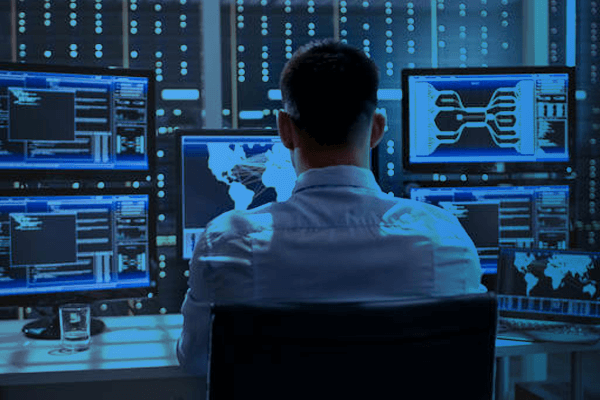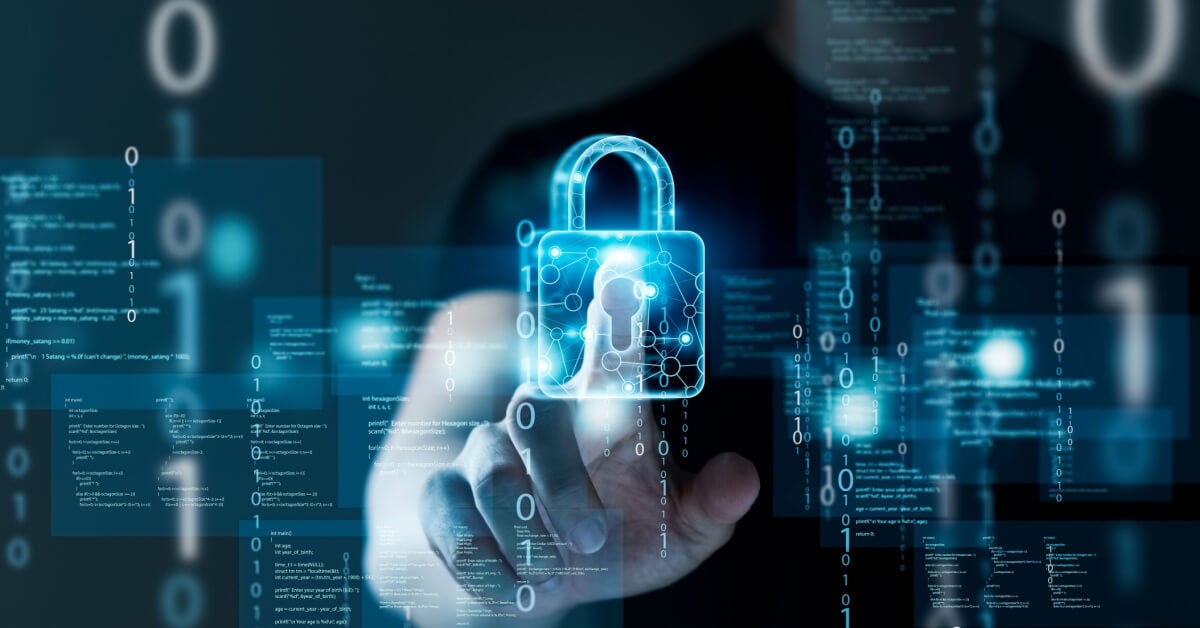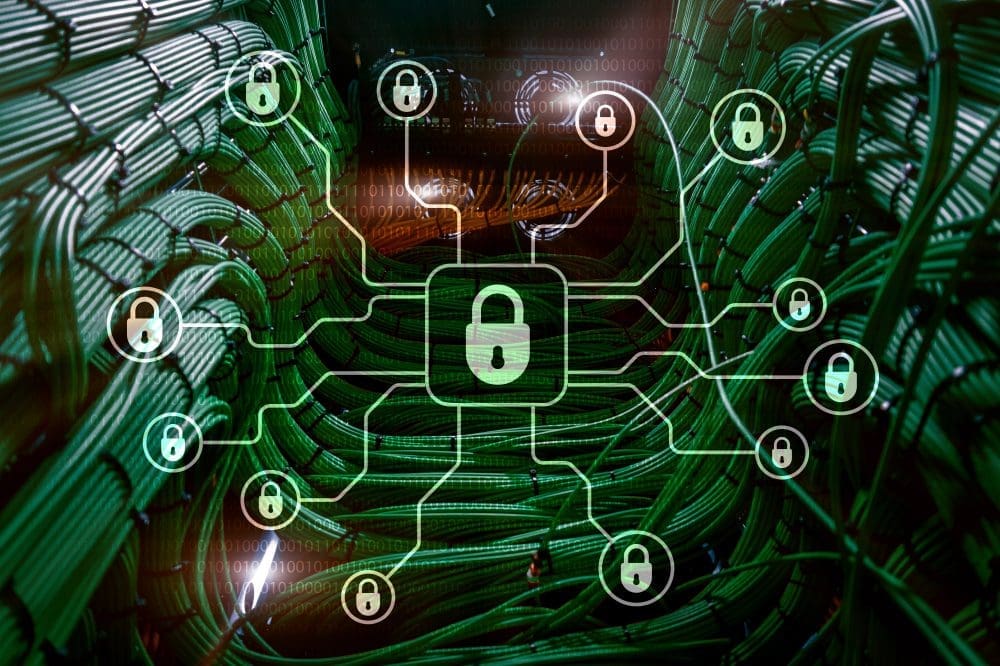
Definition of Cyber Security Monitoring
Different forms of cyber monitoring are vital for securing digital assets. While the log file monitor examines system logs, the endpoint monitor guards specific devices, the network tracker examines traffic patterns for mistakes, and the cloud security monitor protects data in the cloud. Each type shows the diversity and skills needed in today’s cyber security scene and functions as a critical layer in the broad defense against online risks.

Importance in the Digital Age
In an era dominated by digital interactions, the importance of cybersecurity monitoring cannot be overstated. It is a proactive defense against malicious activities that could compromise sensitive information.
Network Monitoring
Network monitoring analyzes traffic to identify unusual patterns or activities that may indicate a security breach.
Endpoint Monitoring
Endpoint monitoring involves tracking activities on individual devices such as computers, smartphones, or servers to detect and prevent security incidents.
Log File Monitoring
Log file monitoring entails the analysis of log data generated by various systems, applications, and devices to identify security events.
Cloud Security Monitoring
With the increasing demand for cloud services, cloud security monitoring ensures data protection in cloud environments.
Significance of Continuous Monitoring
Continuous monitoring stands as the linchpin in fortifying digital defenses. Proactive risk detection is crucial, ensuring firms remain ahead of evolving hazards. Regular tracking is the basis of a robust cyber security plan, enhancing reaction time and complying with rules while fighting against future risks in a changing digital world.
Proactive Threat Detection
By monitoring things regularly, firms can reduce possible harm by noticing threats early on and taking proper action.
Incident Response Efficiency
safety monitor helps response groups respond to attacks more quickly by giving them immediate data.
Compliance and Regulatory Requirements
Regular tracking is vital for achieving safety and regulatory compliance and protecting enterprises from legal liability.
Best Practices for Cyber Security Monitoring
The execution of standards, such as live tracking for timely threat response, the use of advanced analytics to spot patterns, periodic risk assessments, and the support of staff to undergo cyber hygiene training, are essential to effective cyber security monitoring. These practices collectively form a robust defense mechanism, ensuring organizations stay proactive against evolving cyber threats and vulnerabilities.
Implementing Real-Time Monitoring
Real-time monitoring enables organizations to respond swiftly to emerging warnings and minimize the risk of data breaches.
Utilizing Advanced Analytics
Integrating advanced analytics allows for the identification of patterns indicative of potential security risks, enhancing threat detection capabilities.
Regular Vulnerability Assessments
Regular evaluations of risk assist firms in identifying and fixing possible gaps in their security system.
Employee Training on Cyber Hygiene
By teaching workers about cyber hygiene methods, you can act as a human wall and lower the risk of human error-related hacking.
Challenges in Cyber Security Monitoring
Lack of skilled staff, data stress, and the ever-changing threat picture present challenges for cyber security control. Finding solutions to overcome these barriers and ensure efficient detection and reduction is vital for adapting to the ever-evolving digital world. These trends indicate a dynamic evolution that provides proactive defense from more complex attacks.
Evolving Threat Landscape
Businesses face a problem in recognizing and addressing new dangers due to the ongoing nature of network risks.
Data Overload
Companies may need clarification on the sheer amount of data provided by tracking devices, which can make it difficult to discern between everyday tasks and possible risks.
Skill Shortage in Cyber Security
The pairing of AI with sensor learning, which improves security systems’ foresight abilities, makes active threat detection possible.
Cyber Security Monitoring Tools
Cyber security monitoring tools are the backbone of digital defense, offering diverse solutions. Antivirus software acts as an initial defense against malware, and Systems to identify attack (IDS) monitor and alert on malicious activities. At the same time, surety Information and Event Management (SIEM) centralizes log data for comprehensive analysis. These tools collectively fortify organizations against evolving cyber threats.

Antivirus Software
Antiviral software remains an essential tool for detecting and avoiding viruses as a first line of protection.
Systems to identify attack (IDS)
IDS scans network or system activities for malicious behavior, issues alerts, and takes preventive actions when potential threats are identified.
Security Information and Event Management (SIEM)
SIEM solutions collect on-mining log data from several sources to provide a unified picture of a firm’s safety rating.
Future Trends in Cyber Security Monitoring
Future trends in cyber security monitoring are marked by the integration of artificial judgment and machine learning, which provide advanced predictive capabilities. Blockchain technology is emerging for enhanced security, while the zero-trust security model challenges traditional approaches. These models imply an active evolution that offers activity against more complex threats.
Artificial Intelligence and Machine Learning Integration
The pairing of AI with sensor learning, which improves the predictive abilities of tracking systems, makes active threat detection possible.
Blockchain for Enhanced Security
Blockchain technology, which offers a distributed system and is resistant to misuse, is being studied increasingly to guard private information.
Zero Trust Security Model
The zero-trust security model challenges the traditional perimeter-based approach, requiring continuous verification of entities accessing the network.
Real-world Examples of Cyber Security Breaches
Strong defenses are vital, as shown by actual cybersecurity breaches. The 2013 Target Inc. data breach put millions of people at risk of credit card fraud, exposing the effects of inadequate security. The 2017 Equifax data breach exposed personal data, highlighting computer danger’s practical and speedy effects.
Target Corporation Data Breach
Robust network control became crucial after a 2013 Target Group hack revealed the credit card information of millions of customers.
Equifax Data Breach
Private data security became needed after the 2017 Sony data breach revealed the personal data of over 147 million people.
Case Studies
Examining case studies of successful cyber security monitoring implementations reveals tangible benefits. XYZ Company’s enhanced incident response showcased the power of proactive monitoring. Meanwhile, ABC Corporation’s success in compliance demonstrated the actual impact on regulatory adherence. These case studies exemplify the efficacy of strategic cyber security monitoring in fortifying organizational resilience.
XYZ Company’s Improved Incident Response
By implementing robust cyber security monitoring, XYZ Company significantly improved its incident response time, minimizing the impact of potential threats.
ABC Corporation’s Compliance Success
By investing in cyber security monitoring, ABC Company verified respect for industry rules and boosted its ability to detect threats. By incorporating a thorough monitoring system, ABC Corp. effectively manages the intricacies of legal regulations, avoids legal risks, and maintains its image.
How Individuals Can Contribute to Cyber Security Monitoring
Individuals play a pivotal role in present cyber security monitoring by practicing vital password hygiene, recognizing phishing attempts, and ensuring regular software updates. Their vigilance creates an additional layer of defense, fostering a collective responsibility to thwart potential threats and bolster the overall resilience of digital environments.
Password Hygiene
Individuals play a crucial role in financing cyber security. Adhering to solid password practices, such as using complex combinations and updating passwords regularly, contributes to a robust first line of defense.

Recognizing Phishing Attempts
It is essential to be vigilant about phishing attempts and suspicious emails. Educating individuals about common phishing tactics empowers them to promptly identify and report potential threats.
Keeping Software Updated
Regularly updating software, including operating systems and applications, ensures that known vulnerabilities are exploited, reducing the risk of cyberattacks.
The Role of Cyber Security Monitoring in Remote Work
Cybersecurity control is critical in remote work because it limits the new risks associated with decentralized systems. In this growing field, robust tracking ensures the safe transfer of data, reduces risks, and allows groups to detect and respond to possible threats earlier.
Heightened Risks in Remote Environments
The shift to remote work has introduced new challenges and risks. Monitoring for online safety becomes even more vital to reduce the growing threat picture that comes with being in distant areas.
Strategies for Securing Remote Work
Building robust virtual private network (VPN) facilities, ensuring devices are secure, and offering staff cyber training are all vital to safe remote work locations.
Conclusion
To sum up, cyber security monitoring is a vital part of defending the digital space. It is essential to the new picture of digital security since it can do things on the spot to prevent threats, comply with recent trends, and adjust to them. Cybersecurity control’s active and constant nature will be crucial to protecting our digital future as technology develops.
Why is cyber security monitoring important?
Cyber security monitoring is crucial for identifying and mitigating security threats, preventing data breaches, and safeguarding sensitive information from unauthorized access.
What are the common challenges in cyber security monitoring?
Common challenges in cyber security monitoring include alert fatigue, the complexity of networks, and the evolving nature of cyber threats.








